-
 Bitcoin
Bitcoin $83,218.0125
-2.60% -
 Ethereum
Ethereum $1,586.4638
-3.87% -
 Tether USDt
Tether USDt $0.9996
-0.01% -
 XRP
XRP $2.0896
-3.40% -
 BNB
BNB $582.4772
-2.57% -
 Solana
Solana $127.0813
-4.36% -
 USDC
USDC $0.9999
0.00% -
 Dogecoin
Dogecoin $0.1619
-4.07% -
 TRON
TRON $0.2526
2.38% -
 Cardano
Cardano $0.6319
-4.54% -
 UNUS SED LEO
UNUS SED LEO $9.3069
-0.12% -
 Chainlink
Chainlink $12.4967
-5.42% -
 Avalanche
Avalanche $19.4394
-5.00% -
 Stellar
Stellar $0.2352
-4.53% -
 Sui
Sui $2.2092
-7.00% -
 Shiba Inu
Shiba Inu $0.0...01198
-4.71% -
 Toncoin
Toncoin $2.8160
-6.87% -
 Hedera
Hedera $0.1644
-6.43% -
 Bitcoin Cash
Bitcoin Cash $342.1859
-0.86% -
 Litecoin
Litecoin $77.0418
-2.30% -
 Polkadot
Polkadot $3.6299
-2.85% -
 Dai
Dai $1.0000
-0.02% -
 Bitget Token
Bitget Token $4.2733
-3.34% -
 Hyperliquid
Hyperliquid $15.0467
-9.01% -
 Pi
Pi $0.7284
-1.41% -
 Ethena USDe
Ethena USDe $0.9989
-0.01% -
 Monero
Monero $202.5557
-2.26% -
 Uniswap
Uniswap $5.2896
-4.24% -
 OKB
OKB $52.8982
-1.52% -
 Pepe
Pepe $0.0...07146
-4.33%
How is the seed capital of a Bitcoin ETF used?
Seed capital in a Bitcoin ETF is used to buy Bitcoins, cover operational costs, ensure liquidity, and implement risk management strategies, crucial for the fund's establishment and operation.
Apr 10, 2025 at 02:15 pm
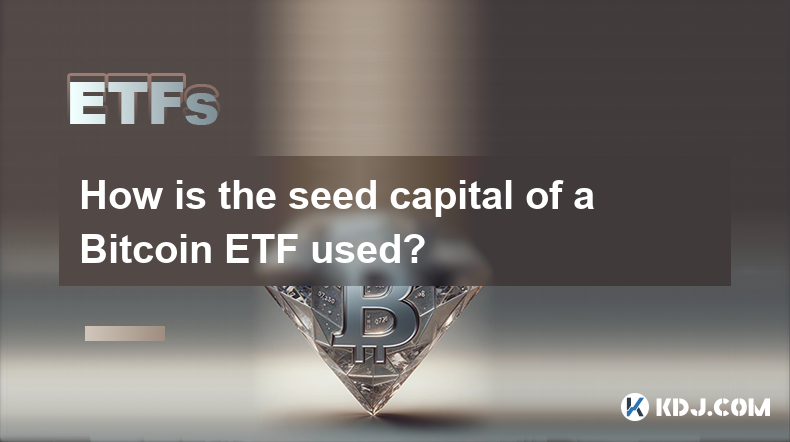
The seed capital of a Bitcoin ETF plays a crucial role in the establishment and operation of the fund. This initial investment is used to create the fund's underlying assets, manage operational costs, and ensure the ETF can start trading on an exchange. Understanding how this seed capital is utilized provides insight into the mechanics of Bitcoin ETFs and their potential impact on the cryptocurrency market.
Creation of Underlying Assets
The primary use of seed capital in a Bitcoin ETF is to purchase the underlying assets, which in this case are Bitcoins. The seed investors provide the initial capital, which the fund manager uses to buy Bitcoins in the open market. This process is essential for establishing the fund's net asset value (NAV), which is the total value of the Bitcoins held by the ETF divided by the number of outstanding shares.
- Determine the amount of seed capital needed: The fund manager calculates the required amount based on the desired size of the ETF and the current market price of Bitcoin.
- Execute the purchase of Bitcoins: Using the seed capital, the fund manager buys Bitcoins from cryptocurrency exchanges or over-the-counter (OTC) markets.
- Secure the Bitcoins: The purchased Bitcoins are then stored in secure digital wallets, often managed by a third-party custodian to ensure safety and compliance with regulatory standards.
Operational Costs and Expenses
Seed capital is also allocated to cover the operational costs and expenses associated with launching and maintaining a Bitcoin ETF. These costs can include legal fees, regulatory compliance, marketing, and administrative expenses. Ensuring that the ETF has sufficient funds to cover these costs is vital for its smooth operation and long-term viability.
- Legal and regulatory fees: The fund manager uses a portion of the seed capital to pay for legal services and regulatory filings required to establish the ETF.
- Marketing and promotion: Some of the seed capital may be used to market the ETF to potential investors, which can include advertising, investor education, and promotional events.
- Administrative expenses: This includes the costs of managing the fund, such as accounting, auditing, and other administrative services.
Liquidity and Market Making
Another important use of seed capital is to ensure liquidity and facilitate market making for the ETF. Seed investors often provide the initial shares that are used to create a liquid market for the ETF on the exchange. This helps to attract more investors and ensures that the ETF can be bought and sold efficiently.
- Create initial shares: The seed capital is used to create the initial shares of the ETF, which are then listed on the exchange.
- Engage market makers: The fund manager may use part of the seed capital to engage market makers who help maintain liquidity by buying and selling the ETF shares.
- Monitor and adjust: The fund manager continuously monitors the market and may use additional seed capital to adjust the ETF's holdings and ensure liquidity.
Risk Management and Hedging
Seed capital can also be used for risk management and hedging strategies to protect the ETF's value. The fund manager may use a portion of the seed capital to implement hedging strategies, such as purchasing options or futures contracts, to mitigate potential losses due to Bitcoin's volatility.
- Assess risk exposure: The fund manager evaluates the ETF's exposure to Bitcoin's price fluctuations and other market risks.
- Implement hedging strategies: Using the seed capital, the fund manager may purchase financial instruments that can help offset potential losses.
- Monitor and adjust hedging positions: The fund manager regularly reviews and adjusts the hedging positions to ensure they remain effective.
Regulatory Compliance and Investor Protection
Ensuring regulatory compliance and investor protection is another critical use of seed capital. The fund manager uses a portion of the seed capital to meet regulatory requirements and implement measures that protect investors' interests. This includes maintaining transparency, providing regular reports, and adhering to anti-money laundering (AML) and know-your-customer (KYC) regulations.
- Meet regulatory requirements: The fund manager uses seed capital to cover the costs of regulatory compliance, such as filing fees and audits.
- Implement investor protection measures: This includes setting up systems for regular reporting, investor communication, and compliance with AML and KYC regulations.
- Maintain transparency: The fund manager ensures that the ETF's operations and holdings are transparent to investors, which may involve using seed capital to develop and maintain reporting systems.
Frequently Asked Questions
Q: Can seed capital be used to influence the price of Bitcoin?
A: While seed capital is used to purchase Bitcoins, its primary purpose is to establish the ETF's underlying assets and not to manipulate the market. However, large purchases can have a temporary impact on Bitcoin's price due to market dynamics.
Q: What happens to the seed capital if the ETF fails to launch?
A: If the ETF fails to launch, the seed capital is typically returned to the seed investors, minus any expenses incurred during the attempt to establish the fund.
Q: How is the performance of a Bitcoin ETF measured?
A: The performance of a Bitcoin ETF is measured by its net asset value (NAV), which reflects the value of the Bitcoins held by the fund. The ETF's performance is also compared to the price of Bitcoin in the open market to assess its tracking accuracy.
Q: Can seed capital be replenished after the initial investment?
A: Seed capital is typically a one-time investment used to establish the ETF. However, the fund may raise additional capital through new share issuances or other means to support its growth and operations.
Disclaimer:info@kdj.com
The information provided is not trading advice. kdj.com does not assume any responsibility for any investments made based on the information provided in this article. Cryptocurrencies are highly volatile and it is highly recommended that you invest with caution after thorough research!
If you believe that the content used on this website infringes your copyright, please contact us immediately (info@kdj.com) and we will delete it promptly.
- BetMGM Bonus Code CUSE150: Unlock $150 or $1500 First Bet Match
- 2025-04-14 06:35:13
- Fartcoin (FART) Cryptocurrency Surges 84% as Market Turbulence Reaches New Heights
- 2025-04-14 06:35:13
- Bryce Paul Reviews His #1 AI Crypto Pick That Could Outpace Even Nvidia's Explosive Run in 2025
- 2025-04-14 06:30:13
- Mantra Tokens Crash, $5 Billion Wiped Off
- 2025-04-14 06:30:13
- Mantra, Once a Beacon of Hope in RWA Tokenization, Collapses Overnight, Losing 90% of Its Market Cap
- 2025-04-14 06:25:12
- Here's Why Mantra (OM) Price Crashed 90%
- 2025-04-14 06:25:12
Related knowledge
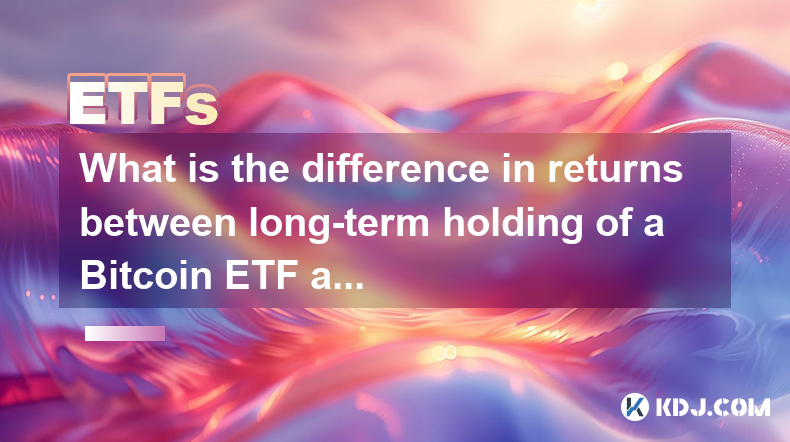
What is the difference in returns between long-term holding of a Bitcoin ETF and holding Bitcoin directly?
Apr 09,2025 at 04:15am
When considering the difference in returns between long-term holding of a Bitcoin ETF and holding Bitcoin directly, it's essential to understand the nuances and factors that affect each investment option. Both approaches have their unique advantages and potential drawbacks, which can significantly impact the overall returns over time. Understanding Bitc...
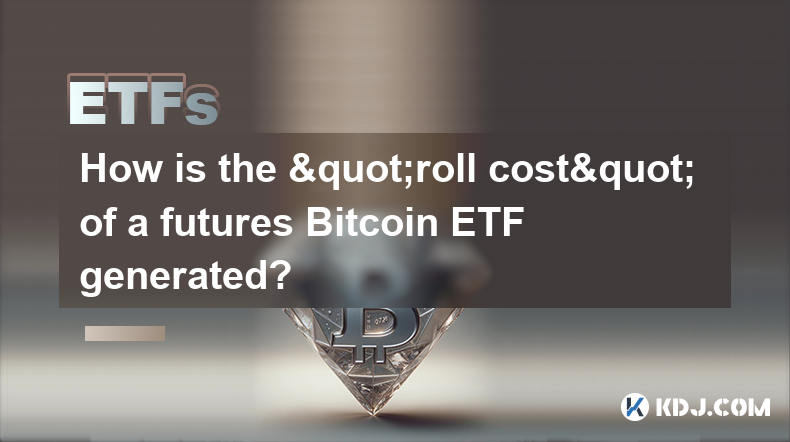
How is the "roll cost" of a futures Bitcoin ETF generated?
Apr 08,2025 at 01:22pm
The 'roll cost' of a futures Bitcoin ETF is a critical concept for investors to understand, as it directly impacts the performance of the ETF. In this article, we will delve into the mechanics of how the roll cost is generated, exploring the underlying processes and factors that contribute to this cost. Understanding Futures ContractsFutures contracts a...
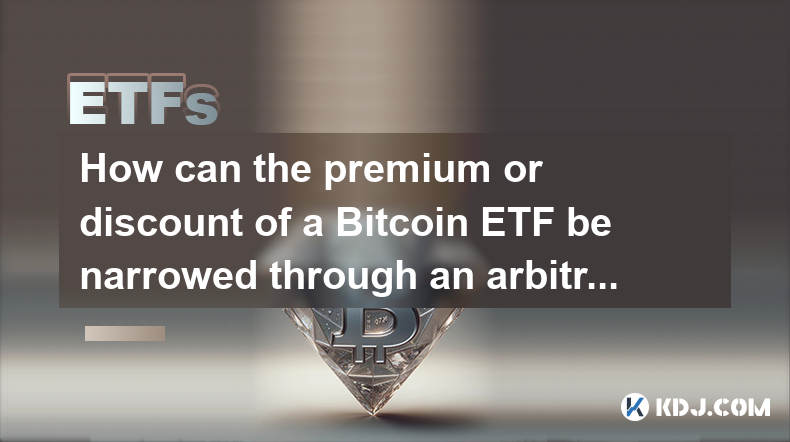
How can the premium or discount of a Bitcoin ETF be narrowed through an arbitrage mechanism?
Apr 09,2025 at 12:07am
Arbitrage mechanisms play a crucial role in narrowing the premium or discount of a Bitcoin Exchange Traded Fund (ETF). Understanding how these mechanisms work can provide valuable insights into the dynamics of Bitcoin ETFs and their relationship with the underlying asset. This article will delve into the specifics of how arbitrage can be used to align t...

What factors affect the bid-ask spread of a Bitcoin ETF?
Apr 08,2025 at 08:50pm
The bid-ask spread of a Bitcoin Exchange Traded Fund (ETF) is a critical metric that investors and traders closely monitor. It represents the difference between the highest price a buyer is willing to pay (bid) and the lowest price a seller is willing to accept (ask). Several factors influence this spread, and understanding them can help investors make ...

How is the seed capital of a Bitcoin ETF used?
Apr 10,2025 at 02:15pm
The seed capital of a Bitcoin ETF plays a crucial role in the establishment and operation of the fund. This initial investment is used to create the fund's underlying assets, manage operational costs, and ensure the ETF can start trading on an exchange. Understanding how this seed capital is utilized provides insight into the mechanics of Bitcoin ETFs a...
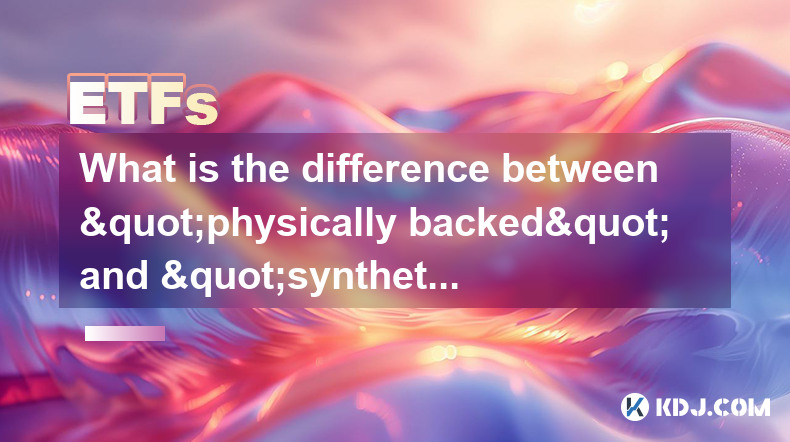
What is the difference between "physically backed" and "synthetic" Bitcoin ETFs in terms of holding assets?
Apr 10,2025 at 04:56pm
Bitcoin Exchange Traded Funds (ETFs) have become a popular way for investors to gain exposure to the cryptocurrency market without directly owning the underlying asset. There are two primary types of Bitcoin ETFs: physically backed and synthetic. Understanding the differences between these two types, particularly in terms of how they hold assets, is cru...

What is the difference in returns between long-term holding of a Bitcoin ETF and holding Bitcoin directly?
Apr 09,2025 at 04:15am
When considering the difference in returns between long-term holding of a Bitcoin ETF and holding Bitcoin directly, it's essential to understand the nuances and factors that affect each investment option. Both approaches have their unique advantages and potential drawbacks, which can significantly impact the overall returns over time. Understanding Bitc...

How is the "roll cost" of a futures Bitcoin ETF generated?
Apr 08,2025 at 01:22pm
The 'roll cost' of a futures Bitcoin ETF is a critical concept for investors to understand, as it directly impacts the performance of the ETF. In this article, we will delve into the mechanics of how the roll cost is generated, exploring the underlying processes and factors that contribute to this cost. Understanding Futures ContractsFutures contracts a...

How can the premium or discount of a Bitcoin ETF be narrowed through an arbitrage mechanism?
Apr 09,2025 at 12:07am
Arbitrage mechanisms play a crucial role in narrowing the premium or discount of a Bitcoin Exchange Traded Fund (ETF). Understanding how these mechanisms work can provide valuable insights into the dynamics of Bitcoin ETFs and their relationship with the underlying asset. This article will delve into the specifics of how arbitrage can be used to align t...

What factors affect the bid-ask spread of a Bitcoin ETF?
Apr 08,2025 at 08:50pm
The bid-ask spread of a Bitcoin Exchange Traded Fund (ETF) is a critical metric that investors and traders closely monitor. It represents the difference between the highest price a buyer is willing to pay (bid) and the lowest price a seller is willing to accept (ask). Several factors influence this spread, and understanding them can help investors make ...

How is the seed capital of a Bitcoin ETF used?
Apr 10,2025 at 02:15pm
The seed capital of a Bitcoin ETF plays a crucial role in the establishment and operation of the fund. This initial investment is used to create the fund's underlying assets, manage operational costs, and ensure the ETF can start trading on an exchange. Understanding how this seed capital is utilized provides insight into the mechanics of Bitcoin ETFs a...

What is the difference between "physically backed" and "synthetic" Bitcoin ETFs in terms of holding assets?
Apr 10,2025 at 04:56pm
Bitcoin Exchange Traded Funds (ETFs) have become a popular way for investors to gain exposure to the cryptocurrency market without directly owning the underlying asset. There are two primary types of Bitcoin ETFs: physically backed and synthetic. Understanding the differences between these two types, particularly in terms of how they hold assets, is cru...
See all articles























































































